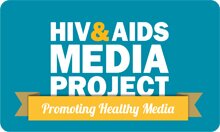Truthtelling

Accuracy
In some senses the first and most basic principle is accuracy. In the context of HIV and AIDS, this means that journalists need to be very careful about the science involved, which is sometimes very complex. Also, we often write about statistics, and again journalists need to be careful to get them right.
How much room is there for the provision of basic health information? Some have placed great stress on this, particularly in the broader context of the media. Telephone numbers of AIDS counselling services would fall under this heading. In this context, the distinction between media and journalism is useful. In other areas of media there is a lot of room for information of this kind. In the news pages, this should not be a primary focus, although there is nothing wrong with accommodating it if possible.
The whole truth...
In a broader sense, the truthtelling principle means telling the story fully and giving it due weight. This involves a number of things.
It means reporting the pandemic in a nuanced way, and investigating the social, medical, personal, scientific, economic, educational, political and other aspects of the issue. That kind of balance won't be achieved in a single story, but it can be achieved over time.
Considering gender
It is particularly important to report with due regard to the gender dimensions involved. Journalists should make sure that women's voices are heard, and investigate the ways in which the pandemic is affecting women and girls differently to men and boys. A gender dimension can be found in almost any story.
In a more general way, a gender perspective of HIV and AIDS points to the need to report on wider gender inequalities that fuel the pandemic, on issues like gender violence, transactional sex and much else.
That gender perspective should also lead journalists to consider the general question of media representations of men and women, and make sure their reporting undermines rather than fuels harmful attitudes.
Gender is an important part of the context, without which the pandemic can't be properly understood.
AIDS fatigue
The call is sometimes made not to report the story purely in terms of gloom and doom. It's a legitimate point, and opportunities to report "positive lives" — stories of people living positively with HIV and AIDS — should be taken. But it would be irresponsible and inaccurate to report the story as anything but a serious crisis. Nobody is served by reporting that tries to play down the problem.
Telling the whole story means giving the pandemic a human face. There have recently been calls to allow the voices of people with HIV or AIDS to be heard more strongly.
News values
There is a fundamental problem that often stops us covering this story fully, and it arises from our own news values. The story of HIV and AIDS does not always fit easily into those values, which call for drama, conflict and the like.
In addition, many audiences feel relatively unaffected. One editor is quoted in the Cadre study as saying: "I don't think AIDS is going to kill our readers in the same proportion that it might kill other classes of people. The threat for our readership is an economic one, primarily."
Our news values, our normal practices are actually in the way of our truthtelling duty, when it comes to this particular story. Some have said we need to change our news values, however those values are very deeply ingrained.
But there are options. Normal news values are not as rigid as they are sometimes made out to be. Ours is a craft that values inventiveness, even though that may sometimes be hard to see in the grey expanse of everyday coverage. The classic hard news story may not easily lend itself to coverage of the pandemic. But there are other formats — it is often just a question of being inventive or original.






